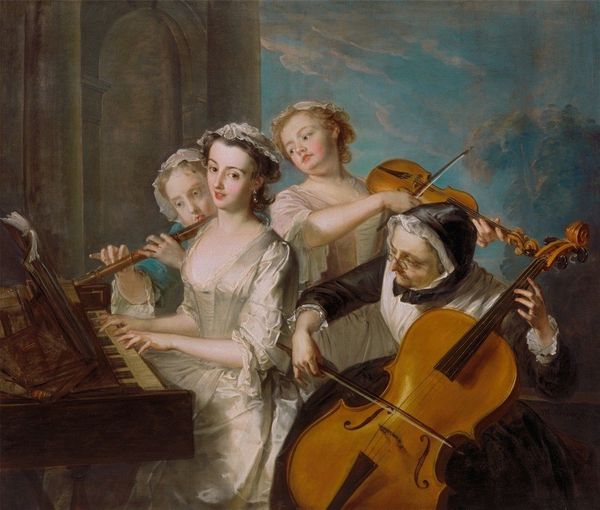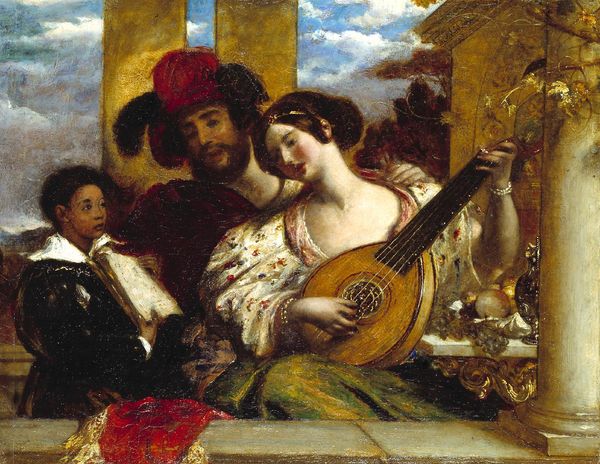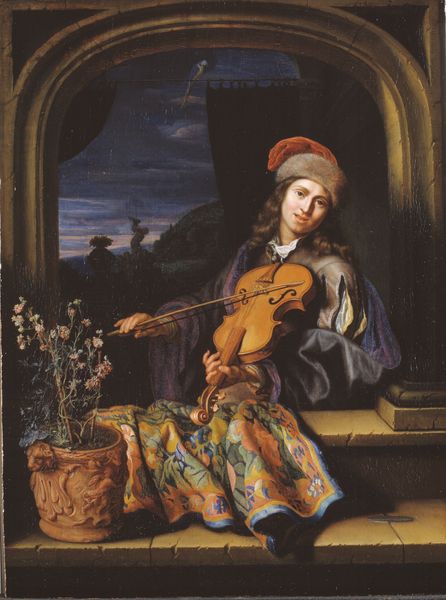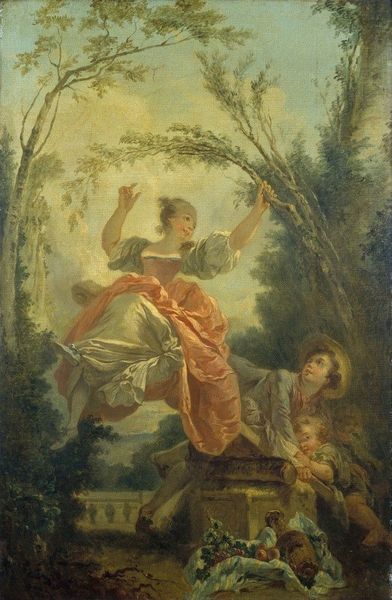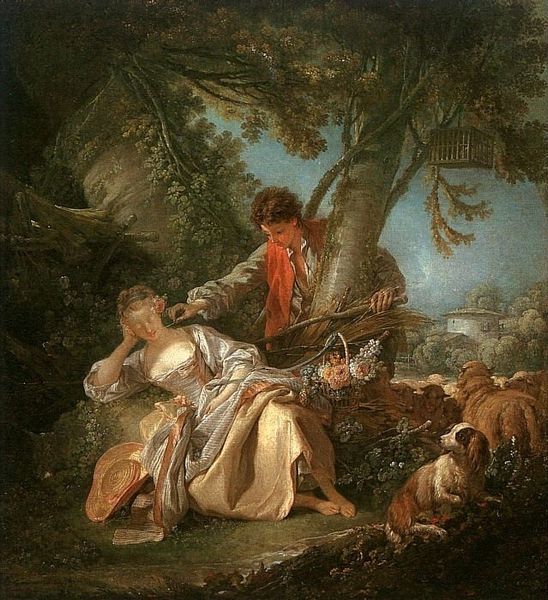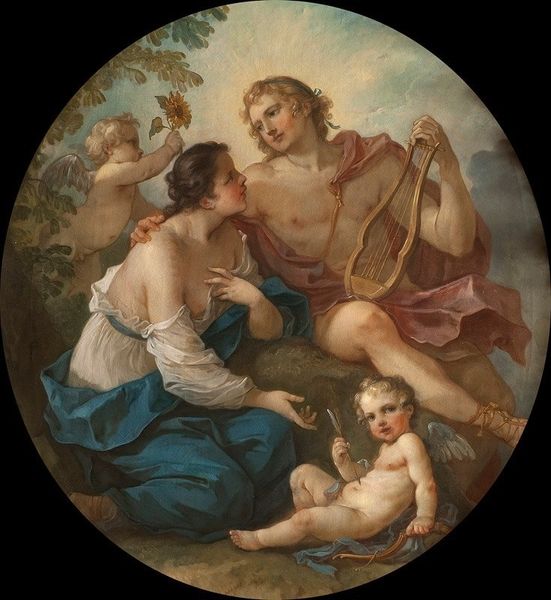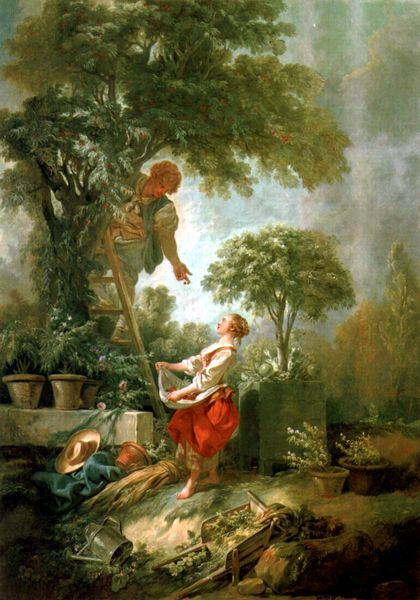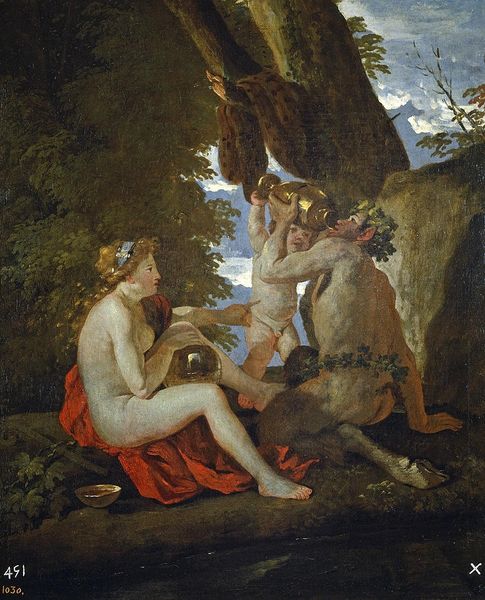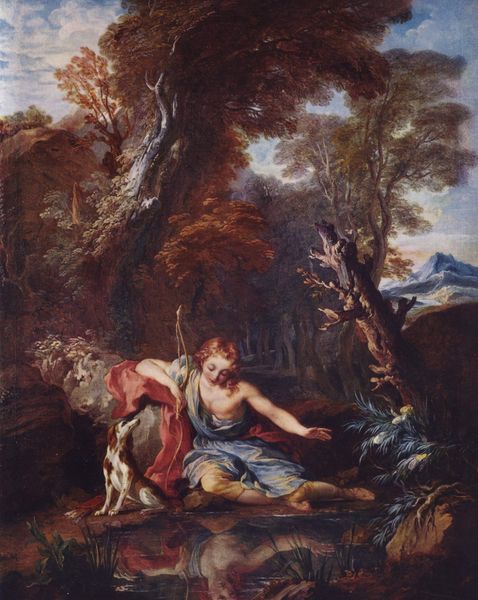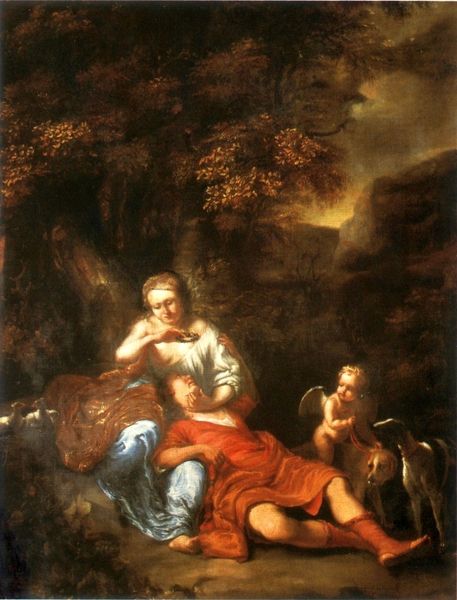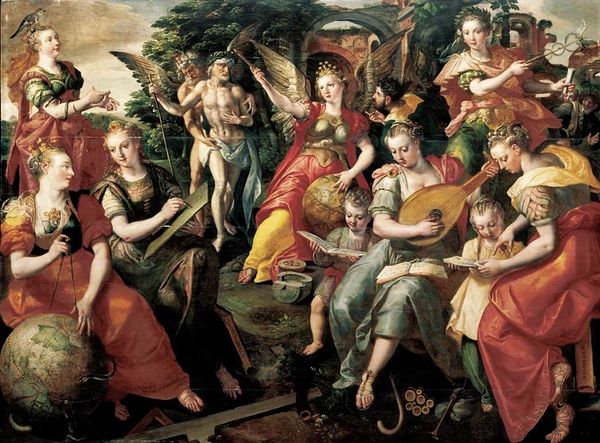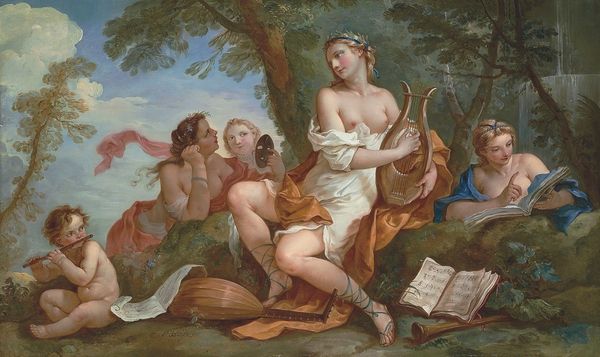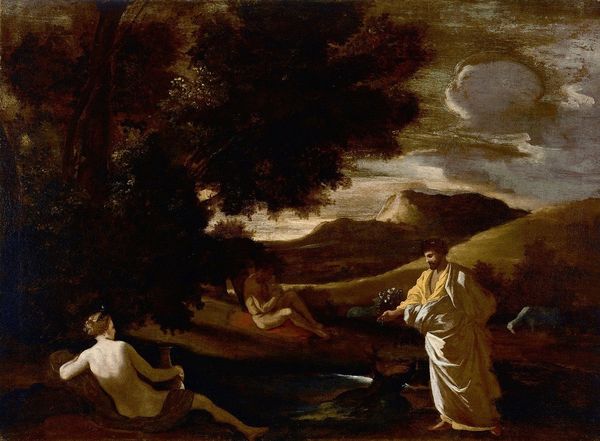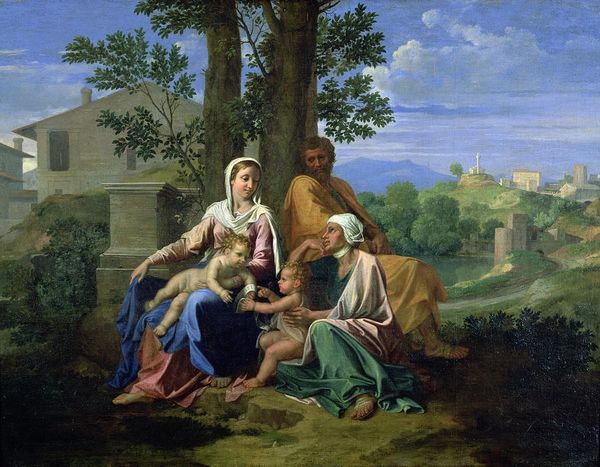
painting, oil-paint
#
portrait
#
baroque
#
painting
#
oil-paint
#
oil painting
#
roman-mythology
#
mythology
#
history-painting
#
musical-instrument
#
portrait art
Dimensions: 130 x 130 cm
Copyright: Public domain
Editor: This is "Melpomene, Erato and Polyhymnia," painted by Eustache Le Sueur around 1655. It’s an oil painting, and the three figures are quite striking. They seem serene, almost dreamlike. What do you see in this piece? Curator: I see the persistence of memory. Le Sueur presents these muses of Greek mythology not merely as figures but as carriers of cultural memory. The musical instrument, the open book, the contemplative poses – each is a symbol, pregnant with meaning that stretches back centuries. Notice how he positions them within this idealized landscape. Editor: So the landscape is part of the symbolism, not just background? Curator: Absolutely. It’s Arcadia, the pastoral ideal – a place of inspiration and creative flourishing. These weren't simply portraits, they were emblems of intellectual and artistic power during a period when French art was consciously aligning itself with classical ideals. Their serene faces carry more weight than meets the eye. They remind us of the power of arts and sciences. Do you see anything else? Editor: Well, their dresses are of different colors. Does each one refer to a specific type of inspiration or artistic field? Curator: Precisely! Melpomene with dark garments is for Tragedy, Erato represents erotic poetry, and Polyhymnia’s golden tunic represents hymns. Color symbolism has strong psychological effects, evoking specific sentiments and traditions in the viewer's mind. What will stay with you from this painting? Editor: I didn't realize how much depth was behind the simple image of three women in a field! Now I recognize the art historical relevance in these figures and colors.
Comments
No comments
Be the first to comment and join the conversation on the ultimate creative platform.
